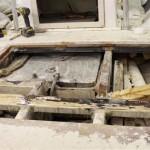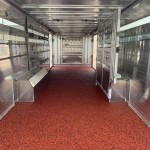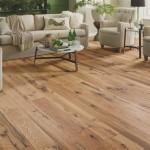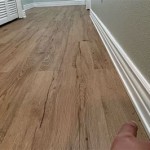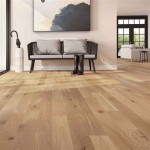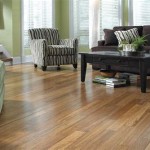Brazilian Walnut Engineered Flooring Reviews: A Comprehensive Examination
Brazilian Walnut, also known as Ipe, is a highly sought-after hardwood flooring material celebrated for its exceptional durability, rich aesthetic appeal, and water resistance. In recent years, engineered Brazilian Walnut flooring has gained significant traction as a comparable alternative to solid hardwood, offering a similar visual experience with enhanced dimensional stability and often, a more accessible price point. This article provides a comprehensive review of Brazilian Walnut engineered flooring, covering its key features, advantages, disadvantages, installation considerations, maintenance requirements, and overall value proposition as reflected in user reviews and expert opinions.
Engineered flooring distinguishes itself from solid hardwood by its multi-layered construction. Typically, it comprises a thin top layer of genuine Brazilian Walnut veneer adhered to a core of plywood or high-density fiberboard (HDF). This construction provides greater resistance to warping and expansion/contraction caused by changes in humidity and temperature, making it a suitable choice for a broader range of environments, including basements and areas with radiant heat. The thickness of the wear layer (the Brazilian Walnut veneer) significantly impacts the floor's durability and longevity, with thicker wear layers allowing for more sanding and refinishing over time.
Key Features and Benefits of Engineered Brazilian Walnut Flooring
Engineered Brazilian Walnut flooring inherits many of the desirable qualities of its solid hardwood counterpart while offering distinct advantages related to stability and installation flexibility. Understanding these features and benefits is crucial for making an informed decision about whether this flooring type is the right fit for a given project.
Aesthetic Appeal: The primary allure of Brazilian Walnut lies in its deep, rich color, ranging from reddish-brown to olive-brown, often with darker grain variations that add character and depth. Engineered flooring retains this natural beauty, providing a luxurious and sophisticated look. The finish applied to the veneer can further enhance the wood's natural tones, offering various options from matte to high-gloss. This aesthetic versatility allows Brazilian Walnut engineered flooring to complement a wide range of interior design styles, from contemporary to traditional.
Durability and Resistance: While the wear layer of engineered flooring is thinner than a solid hardwood plank, Brazilian Walnut itself is an exceptionally dense and hard wood species. It boasts a Janka hardness rating of over 3600, making it extremely resistant to scratches, dents, and wear from foot traffic. The multi-layered construction also contributes to its durability by providing a stable base that resists warping and movement. However, the overall scratch resistance depends on the quality of the finish applied, so it's essential to select a product with a durable, multi-layer finish.
Dimensional Stability: This is where engineered flooring truly shines. The core layers, typically made of plywood or HDF, are designed to be dimensionally stable, meaning they are less susceptible to expansion and contraction due to changes in moisture levels. This stability makes engineered Brazilian Walnut flooring a viable option for installation in areas where solid hardwood might be problematic, such as basements, kitchens, and bathrooms. It also performs well with radiant heating systems, where fluctuations in temperature can cause significant stress on solid hardwood.
Installation Versatility: Engineered flooring offers various installation methods, including floating, glue-down, and nail-down. Floating installations are particularly popular for DIY projects, as they do not require adhesives or fasteners. This method involves interlocking the planks together to create a single, continuous surface. Glue-down installations provide a more permanent bond to the subfloor, resulting in a quieter and more stable floor. Nail-down installations are similar to those used for solid hardwood, providing a secure and traditional feel. This flexibility allows for adaptation to different subfloor conditions and personal preferences.
Cost Considerations: Engineered Brazilian Walnut flooring generally costs less than solid Brazilian Walnut flooring, largely due to the reduced use of the expensive hardwood material. However, prices can vary depending on the thickness of the wear layer, the quality of the core materials, and the brand reputation. It's important to consider the total cost of installation, including the cost of underlayment, adhesives, and labor, when comparing different flooring options.
Potential Drawbacks and Considerations
Despite its numerous advantages, engineered Brazilian Walnut flooring also presents certain drawbacks and considerations that prospective buyers should be aware of before making a purchase. These factors relate to the wear layer thickness, refinishing potential, and potential environmental concerns.
Wear Layer Limitations: The thickness of the Brazilian Walnut veneer determines the floor's lifespan and its ability to be refinished. Thinner wear layers, typically less than 2mm, may not be able to withstand sanding and refinishing, limiting the floor's long-term durability. Once the veneer is worn through, the floor will need to be replaced. Conversely, thicker wear layers, such as 3mm or greater, can be sanded and refinished multiple times, extending the floor's lifespan significantly. Always inquire about the wear layer thickness before buying.
Refinishing Potential: As mentioned above, the ability to refinish engineered flooring depends heavily on the wear layer thickness. Refinishing involves sanding down the existing finish and applying a new coat, which removes a small amount of the veneer. If the wear layer is too thin, sanding could expose the core layer underneath, rendering the floor unusable. Therefore, it's crucial to assess the wear layer thickness and your long-term maintenance expectations when choosing engineered Brazilian Walnut flooring.
Environmental Concerns: The sourcing of Brazilian Walnut can be a sensitive issue. Due to its high demand and slow growth rate, illegal logging and unsustainable harvesting practices have been a concern in some regions. Look for certifications, such as those from the Forest Stewardship Council (FSC), to ensure that the wood is sourced from responsibly managed forests. Additionally, the adhesives used in the engineered flooring's construction can emit volatile organic compounds (VOCs), which can negatively impact indoor air quality. Opt for low-VOC or no-VOC adhesives to minimize these concerns.
Appearance Variation: While Brazilian Walnut is known for its rich color and distinctive grain, there can be considerable variation in appearance between different planks. This variation is a natural characteristic of wood, but it can be more pronounced in engineered flooring where the veneer is sourced from different trees. To minimize this variation, carefully inspect the samples and ask about the grading of the flooring. Some manufacturers offer more consistent grading, while others embrace the natural variation to create a more rustic look. It's a matter of personal preference, but understanding the potential for variation is important.
Installation and Maintenance of Engineered Brazilian Walnut Flooring
Proper installation and regular maintenance are essential for maximizing the lifespan and preserving the beauty of engineered Brazilian Walnut flooring. Following the manufacturer's instructions carefully during installation is crucial to avoid issues such as gaps, squeaks, and unevenness. Regular cleaning and preventative measures can help protect the floor from scratches, dents, and moisture damage.
Installation Guidelines: Before installation, acclimate the flooring to the room's temperature and humidity for several days to allow it to adjust. Ensure the subfloor is clean, level, and dry. For floating installations, use a high-quality underlayment to provide cushioning, sound insulation, and moisture protection. For glue-down installations, select an adhesive specifically designed for engineered flooring and follow the manufacturer's instructions carefully. Leave expansion gaps around the perimeter of the room to allow for natural movement. Avoid nailing or screwing directly through the flooring planks, as this can damage the core layers.
Cleaning and Maintenance: Regularly sweep or vacuum the floor to remove dirt and debris. Use a damp mop with a pH-neutral cleaner specifically designed for hardwood floors. Avoid using excessive water, as this can seep into the seams and damage the core layers. Never use abrasive cleaners, scouring pads, or wax-based products, as these can dull the finish and leave a residue. Place mats at entrances to trap dirt and moisture. Use furniture pads under the legs of chairs and tables to prevent scratches. Consider using area rugs in high-traffic areas to protect the floor from wear and tear. Promptly clean up spills to prevent staining and water damage.
Preventative Measures: Control the humidity levels in your home to minimize expansion and contraction. Use a dehumidifier in humid climates and a humidifier in dry climates. Avoid exposing the floor to direct sunlight for extended periods, as this can cause fading. Trim pets' nails regularly to prevent scratches. Avoid wearing shoes with high heels or cleats on the floor. Educate family members and guests about proper floor care.
By understanding the features, benefits, potential drawbacks, installation requirements, and maintenance needs of engineered Brazilian Walnut flooring, consumers can make informed decisions that align with their specific needs and preferences. Selecting a reputable brand, carefully considering the wear layer thickness, and following proper installation and maintenance guidelines are crucial for ensuring the long-term beauty and durability of this flooring option.

4 3 X 1 2 Brazilian Walnut Prefinished Engineered Hardwood Flooring

4 3 X 1 2 Brazilian Walnut Prefinished Engineered Hurst Hardwoods

Brazilian Walnut Ipe Natural 3 4 Solid Hardwood Flooring Weshipfloors

4 3 X 1 2 Brazilian Walnut Prefinished Engineered Hurst Hardwoods

Bellawood 3 4 In Brazilian Walnut Solid Hardwood Flooring 25 Wide Ll

Brazilian Walnut Ipe Hardwood Flooring Hardwoods4less Com

4 Ipe Brazilian Walnut Flooring Unfinished Woods Usa

Bellawood 3 4 In Brazilian Walnut Solid Hardwood Flooring 5 Wide Ll

Brazilian Walnut S

Brazilian Walnut Flooring Ipe
Related Posts


